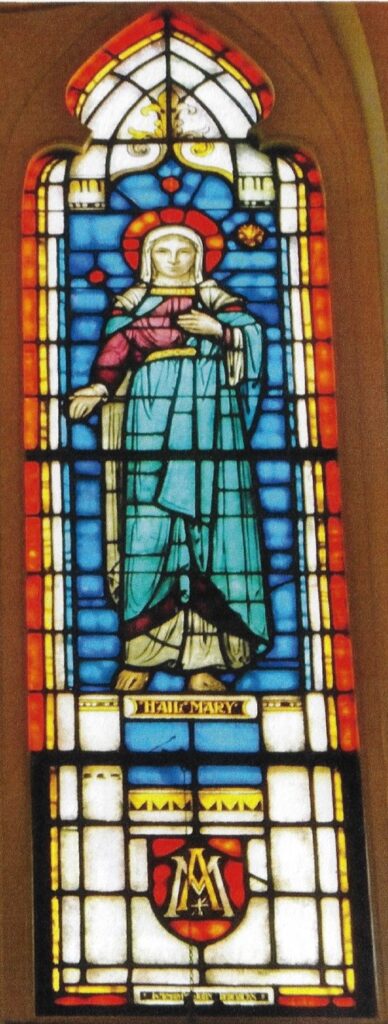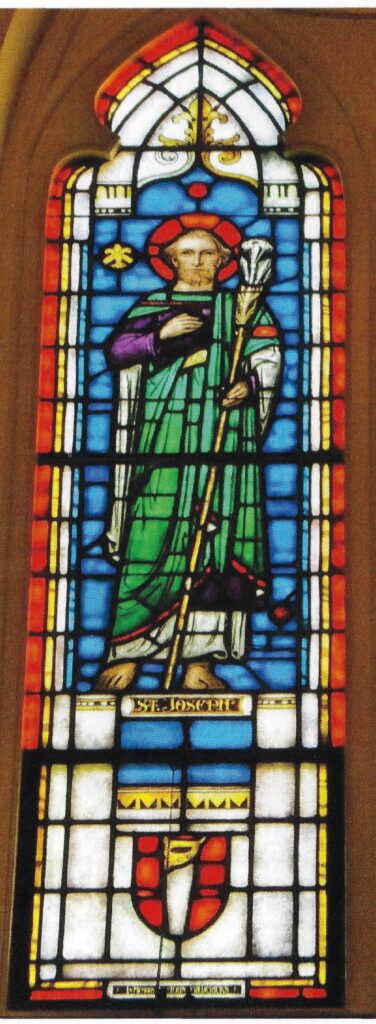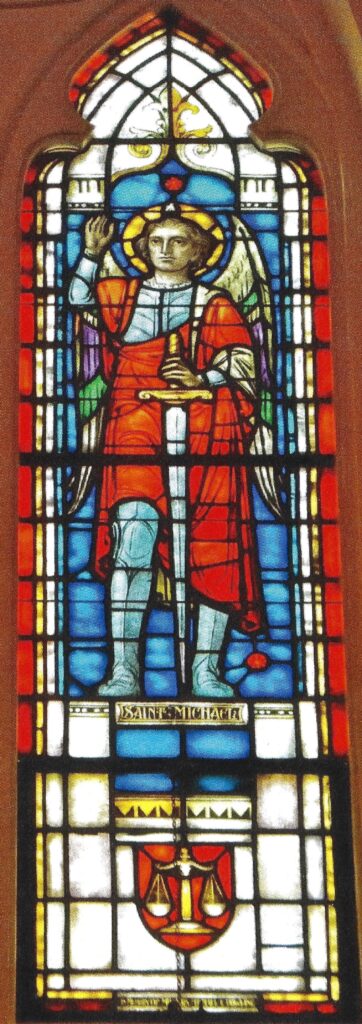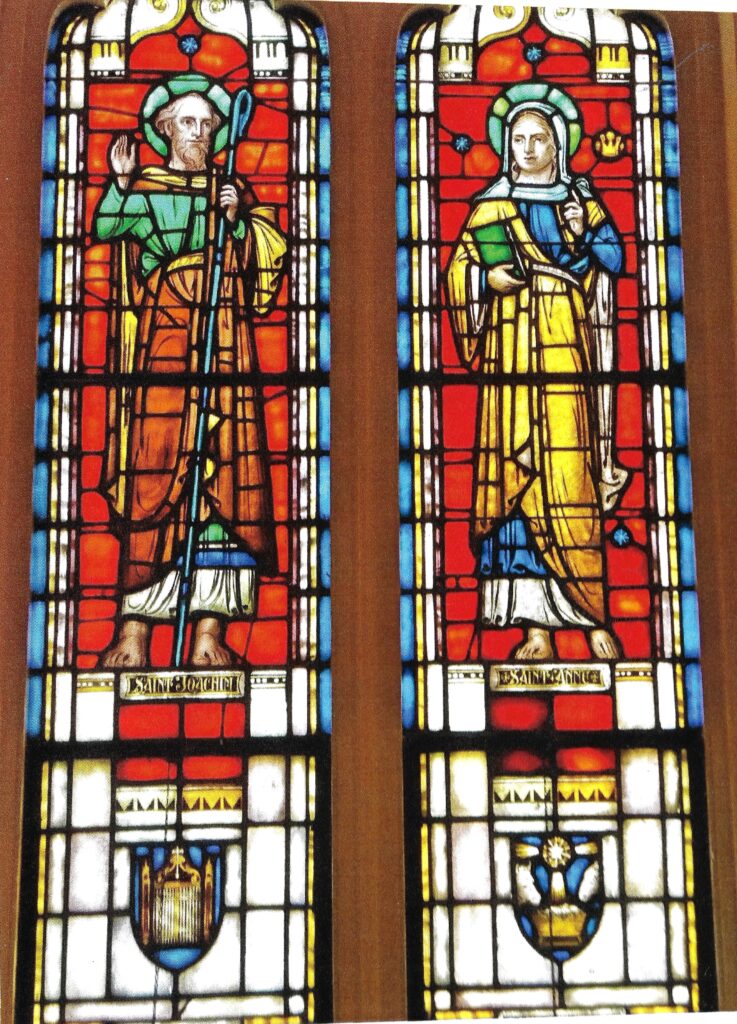In our beautiful parish, our stained glass windows contain pictures of our patrons, intercessors, and saints. We want visitors to become more familiar with our heavenly patrons. Most of these windows have been given by generous parishioners of preceding generations, and have been dedicated to their deceased parents and relatives. Their thoughtfulness is translated today into a precious legacy for our edification and contemplation.
The saints and their windows that will be described on this site are generally in order following the Stations of the Cross. The first window described is at the first stations. After the 14th station, turn to the right (north) transcept. The description of the windows continues around both transcepts back to the first station.
The information provided was researched and compiled by Edmond J. Leonard. There were many hours of library study and composition involved in preparing the book “Stained Glass Windows of St. James.” In addition, “The Windows of Hope” book created by our Saint James American Heritage Girls Troop VA0681, was also used for additional information and pictures.
Hail Mary
(Immaculate Conception)

St. Joseph

St. Michael

St. Anne and St. Joachim
